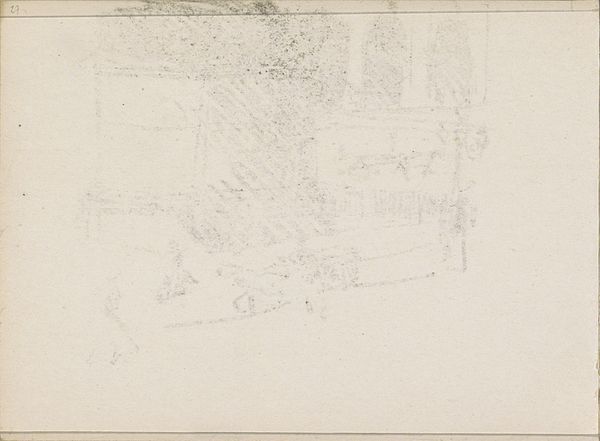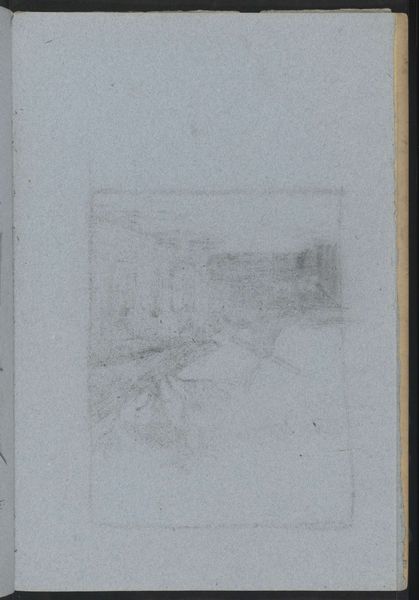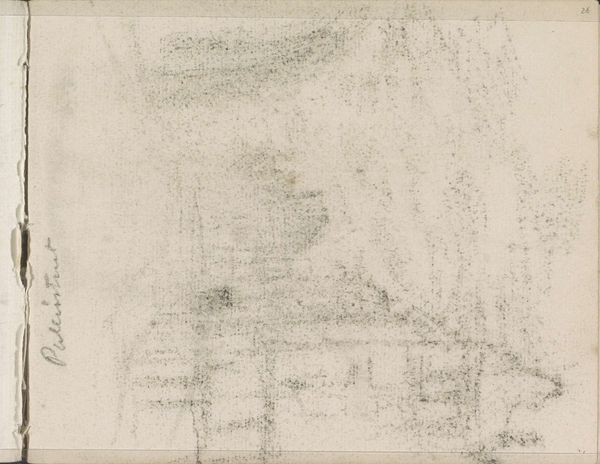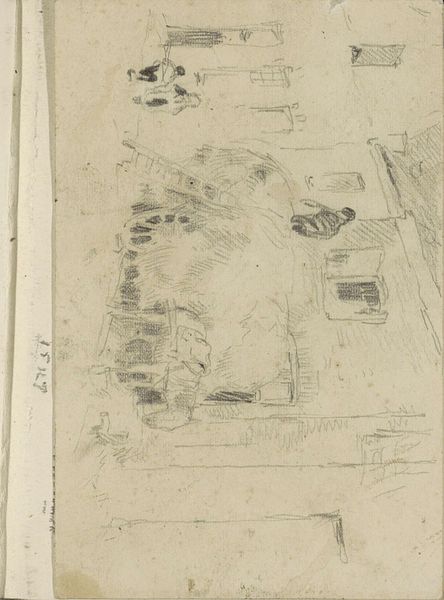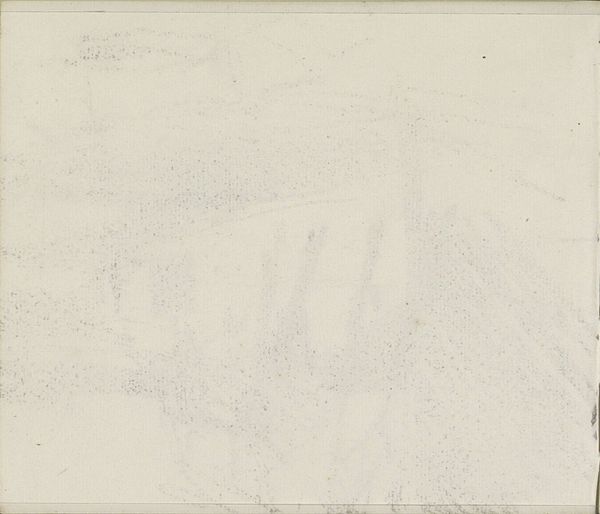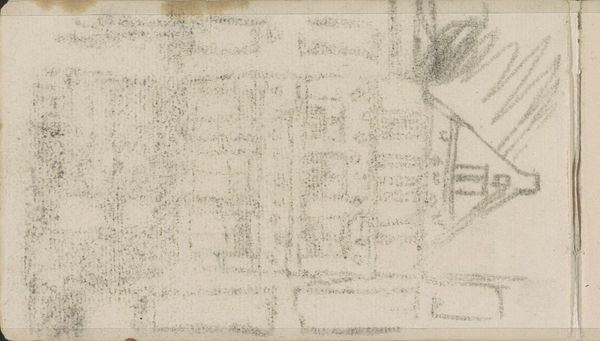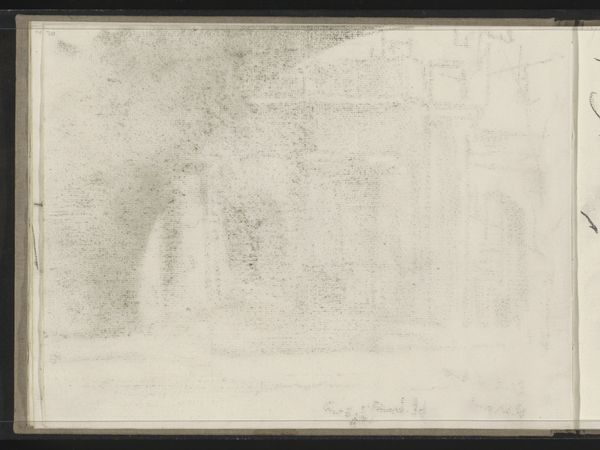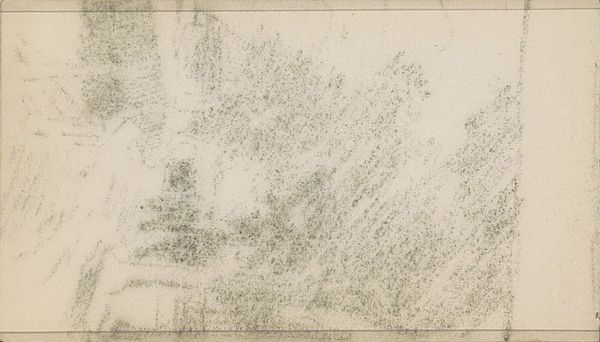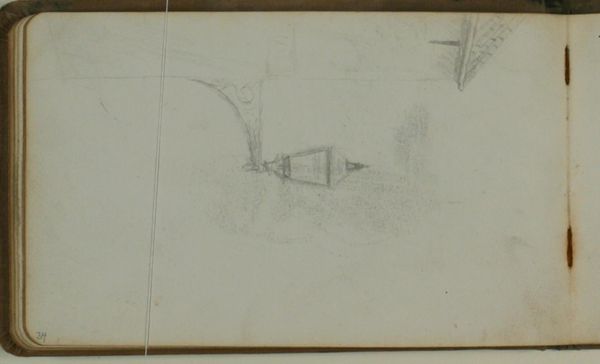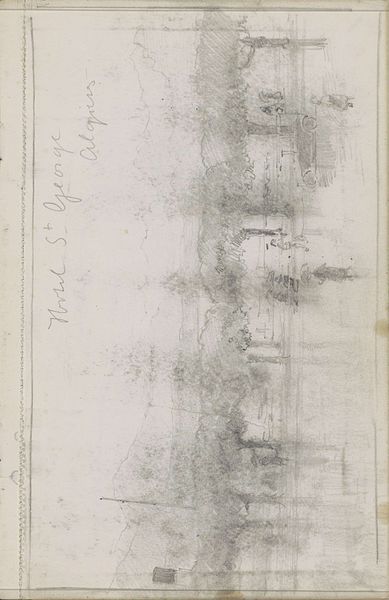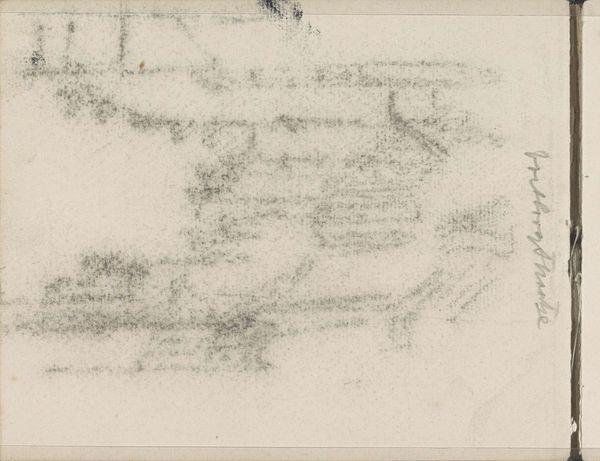
Copyright: Rijks Museum: Open Domain
Curator: This is "Abklatsch van de krijttekening op pagina 17," a pencil drawing made by Isaac Israels likely between 1886 and 1903. It's currently held here at the Rijksmuseum. Editor: Well, my first impression is of something quite ethereal and delicate. It’s a faint pencil sketch; almost as if the image is dissolving before my eyes. I wonder what story the roughness of the marks are trying to convey. Curator: From my understanding, the impressionistic style was heavily impacted by socio-economic shifts, with the rise of industrial production allowing more artists access to painting tools such as brushes and canvases; the advent of easily portable paint tubes let them begin to create works of art outdoors and allowed them to focus less on technique. These new developments were all part of society, as it helped open a doorway to focus less on technique, and to emphasize the importance of material and process over detailed subject matter. The roughness here echoes that accessibility and immediacy. Editor: That's a solid materialist view. From my vantage, looking at the context of display, I see a subtle act of defiance. Traditionally, the art world and its established institutions favored polished artworks destined for exhibitions or museums. Israels' choice to create a drawing, something far more commonplace and less 'important', challenges that traditional role by presenting a work for public consideration. Curator: I find myself considering the kind of paper Israels chose. Was it mass-produced? Was this drawing done 'on site', outdoors with all its potential pitfalls. Or was this an attempt to re-imagine Realism's landscape tradition that elevated the working classes into something poetic and almost noble, perhaps to show us ordinary things like how it looked when a normal person drew outdoors, showing both subject and environment, while emphasizing both in real-time? Editor: Possibly! Though, there is something quietly political in elevating these scenes into artworks. What would audiences familiar with academic art conventions have made of Israels' almost defiant display? Curator: What interests me is how the everyday lives and tools became mediums through which Realism sought to portray people or environments from more commonplace sources. How labor went into making them and bringing forth the artistic expression in these materials themselves - while emphasizing materiality and how it played the role of societal standards/beliefs through different means to convey deeper understanding about ourselves and environment. Editor: Indeed! This dialogue sheds light on the rich exchange between material creation and cultural reception! Thank you, these last two minutes truly helped to get into it. Curator: Yes! Exploring the processes behind creation offers fresh angles when thinking of historical impact and socio-cultural change!
Comments
No comments
Be the first to comment and join the conversation on the ultimate creative platform.
